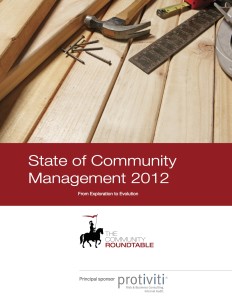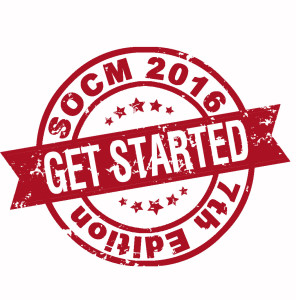By Ted McEnroe, Director of Research and Training, The Community Roundtable
In The State of Community Management 2011, we at The Community Roundtable dug into the eight competencies of the Community Maturity Model. There were sections exploring each of the eight competencies – with insights that still resonate today and, we hope, are worth you taking a second look.
In 2012, Jim and Rachel focused on the CMM’s other axis – what it takes to move a community from its initial phases through the stages of maturity. Our research tracked the continuing maturity of community management, and the budding rise in internal employee communities, and then dug into a detailed view of the stages of community maturity, and captured in one place the “artifacts” of the various stages.
What resonates when I look at the 2012 report today is that it really captures the journey in very tangible ways. At each stage, from Stage 1 – Hierarchy to Stage 2 – Emergent Community, Stage 3 – Community and Stage 4 – Networked, it highlights what communities at each stage likely have and might have, and gives ideas of where they could go next.
The lists are too extensive to summarize here – lists of artifacts of communities at each stage, along with some of the organizational patterns we had seen and tips for how to use them – and a list of initiatives that could start you on the path to move from one stage to the next.
Some examples:
To move from Stage 1 to Stage 2 (“Start”):
- Find an internal owner
- Recruit one or more executives sponsors
- Identify cross-functional champions
- Educate control functions – legal, IT risk, compliance, HR – on social technologies and dynamic
- Create an operational framework and roadmap
- Complete a social business audit or gap analysis
- Start a listening program
To move from Stage 2 to Stage 3 (“Build”):
- Build an operational framework and roadmap
- Develop a comprehensive budget
- Formalize an enterprise-wide governance structure
- Deploy social software
- Develop community management expertise and tools
- Create metrics scorecards for various reporting levels
- Document response and escalation processes
- Define and execute on social and community staff needs
And to move from Stage 3 to Stage 4 (“Grow”):
- Develop a community leadership governance structure.
- Build a community leadership program
- Develop enterprise wide training for various audiences covering online communications through to community strategy.
- Create a repeatable framework and toolkit for community building, specific to the organization
- Evolve social and community analytics from tracking activity to behaviors and influence/roles
- Redefine, articulate and share broadly the core organizational purpose and doctrine so that employees can better align themselves and make effective communications decisions
- Retool specific workflows and processes to optimize decision and communications points using community input and sharing
With a few more years of experience and research since then, I might consider some tweaks to this list, but what is in the report remains a fantastic compilation of actions to build stronger communities. If you’re a community manager in 2016 thinking about roadmaps, metrics and planning, it’s a great read, packed with ideas and resources that resonate today.
 The 2012 report was important for The Community Roundtable in another way – together with the 2011 research it set the stage for the beginnings of our quantitative State of Community Management surveys of the past few years, including the State of Community Management 2016, which is open now for your participation.
The 2012 report was important for The Community Roundtable in another way – together with the 2011 research it set the stage for the beginnings of our quantitative State of Community Management surveys of the past few years, including the State of Community Management 2016, which is open now for your participation.
We hope you’ll take part.
